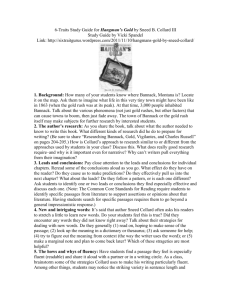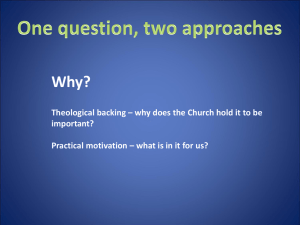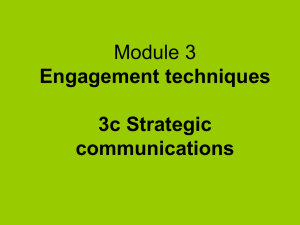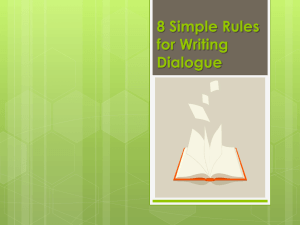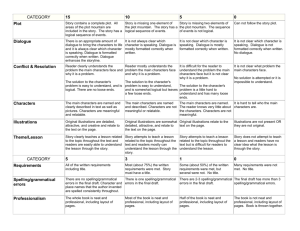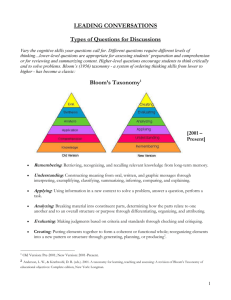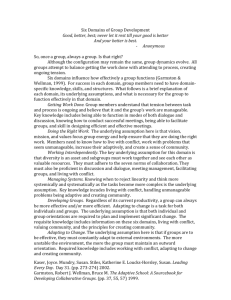How to write a short story
advertisement
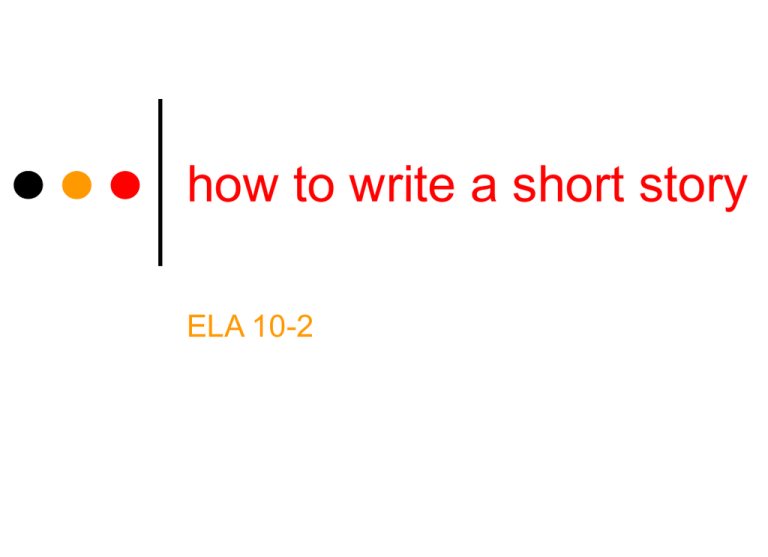
how to write a short story ELA 10-2 the beginning You may want your story to stress action, character, or place. Begin your story with the element you want to emphasize. Perhaps you know a person who would react in an unusual way if placed in a certain situation. If so, place him or her there and see what develops. Perhaps you know, or can imagine, a location where something strange might happen. If so, begin your story with a detailed description of the place. Remember that the opening of your story needs to grab your readers’ attention. You can do that by beginning in the middle of the action (in medias res) with a vivid description of a person or place with an unusual occurrence with a moment of conflict with amusing dialogue. character To create strong characters, show how they dress, talk, behave their peculiar personality traits their relationship with other characters and their environment. setting The writer Isaac Bashevis Singer said that a good story “always has an address.” To create a strong sense of place, show its peculiarities describe the weather, time of year, and time of day include sensory details that tell the reader about he time and place – smells, sounds, appearances use strong images and figures of speech to create atmosphere and mood. conflict Make your readers aware of the conflict early in the story. Conflict creates tension and suspense, and provides the writer with an opportunity to develop character. As readers observe characters coping with conflict, they learn how the characters respond in a crisis (with humour, conviction, timidity), about their courage or cowardice, what they consider to be important or unimportant. Through the responses to conflicts, readers discover whether characters are learning from their experiences and changing. There are different kinds of conflict: conflict between two characters conflict between an individual and a group (neighbours, an institution, a corporation) conflict between a character and nature (rough seas, a snowstorm, a treacherous mountain) Connect events until they reach a climax - the high point of the story. point of view If the story is being told from the first-person point of view, pronouns like “I”, “me”, and “my” will be used to refer to the narrator (“I peered at Kat through the dim light, my hand straining to reach hers.”). The first-person point of view creates a sense of immediacy. Readers are drawn into the story as the main character takes them into his or her confidence. If the author uses the third-person point of view, proper names and pronouns like “he”, “she”, “they” will be used by the author to tell the story (“They stumbled aimlessly through the underbrush, dazed but alive.”). The third-person point of view gives the writer the freedom to move from character to character, event to event, and place to place. dialogue To improve your story dialogue, listen carefully to people speaking, paying attention to pronunciations, length of sentences, vocabulary, tone, and mannerisms. Use contractions and colloquialisms to capture the informality of speech. Keep the dialogue short. In realistic dialogue, speakers interrupt one another and ask one another questions. Dialogue is useful for revealing character and advancing the action. punctuating dialogue “Don’t tell my dad,” she pleaded. Dave asked nervously, “Will it hurt?” “Get down!” the officer ordered immediately. “I am begging you,” the child cried, “to help me find my dog.” dialogue and paragraphs When writing direct speech, be sure to begin a new paragraph each time the speaker changes. If the same speaker continues, and a new paragraph is part of the extended speech, then a set of quotation marks is needed at the beginning of the new paragraph. “What happened to you?” Sylvia asked. “I thought you were supposed to meet me at four o’clock.” Andrew grinned. “I was delayed,” he explained as he unloaded his gym bag, “by Ms. Franchuk.” Sylvia stared at him. “You won the medal,” she guessed. “Congratulations!” sources Resourcelines 9/10, pages 117 – 120 English Language Arts Handbook for Secondary Students (Alberta Learning), pages 24, 123 Hard Lesson First-grader Derrius, right, comforts Magan on October 3, 2005, on her first day of school in Harahan, LA. Magan was forced to leave her previous school in St. Bernard’s Parish, because of the effects of Hurricane Katrina. Her home was also flooded. She spent much of her first morning at her new school crying. the assignment Use the photo "Hard Lesson" as the impetus for a short story. Your story must contain the incident captured by the photo. Your story, of course, must have setting, character, plot, point of view, theme and at least one symbol. Your story must be at least one page in length, using a 12point font. Your story should consider the idea that all people reach a point in their lives where they must face the unknown. You may write from the point of view of either of the little girls, their teacher, any of their parents, a classmate, an older sibling, a newspaper report, etc.











